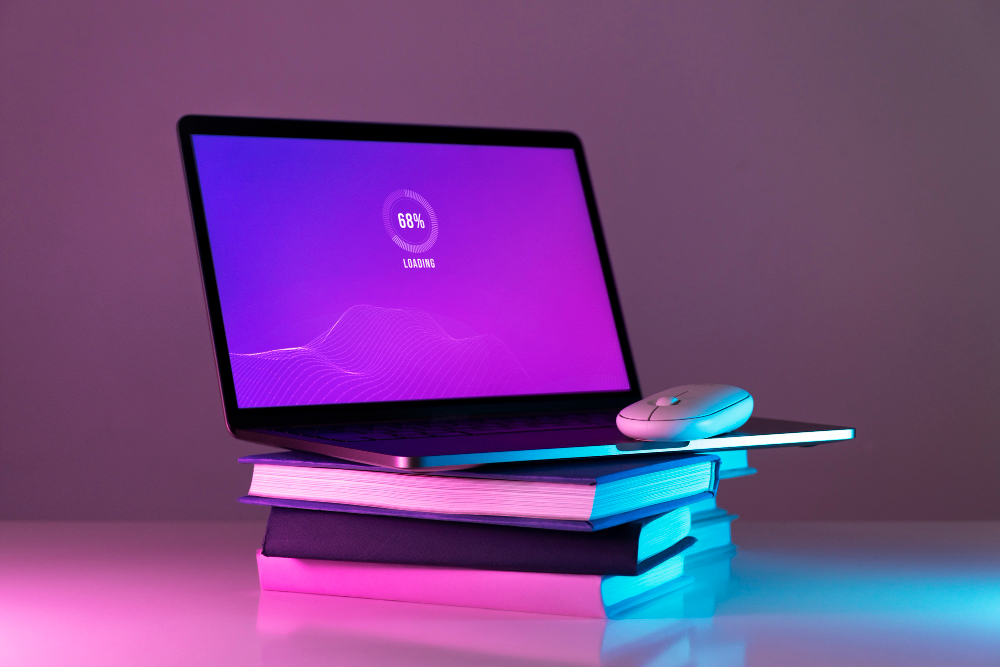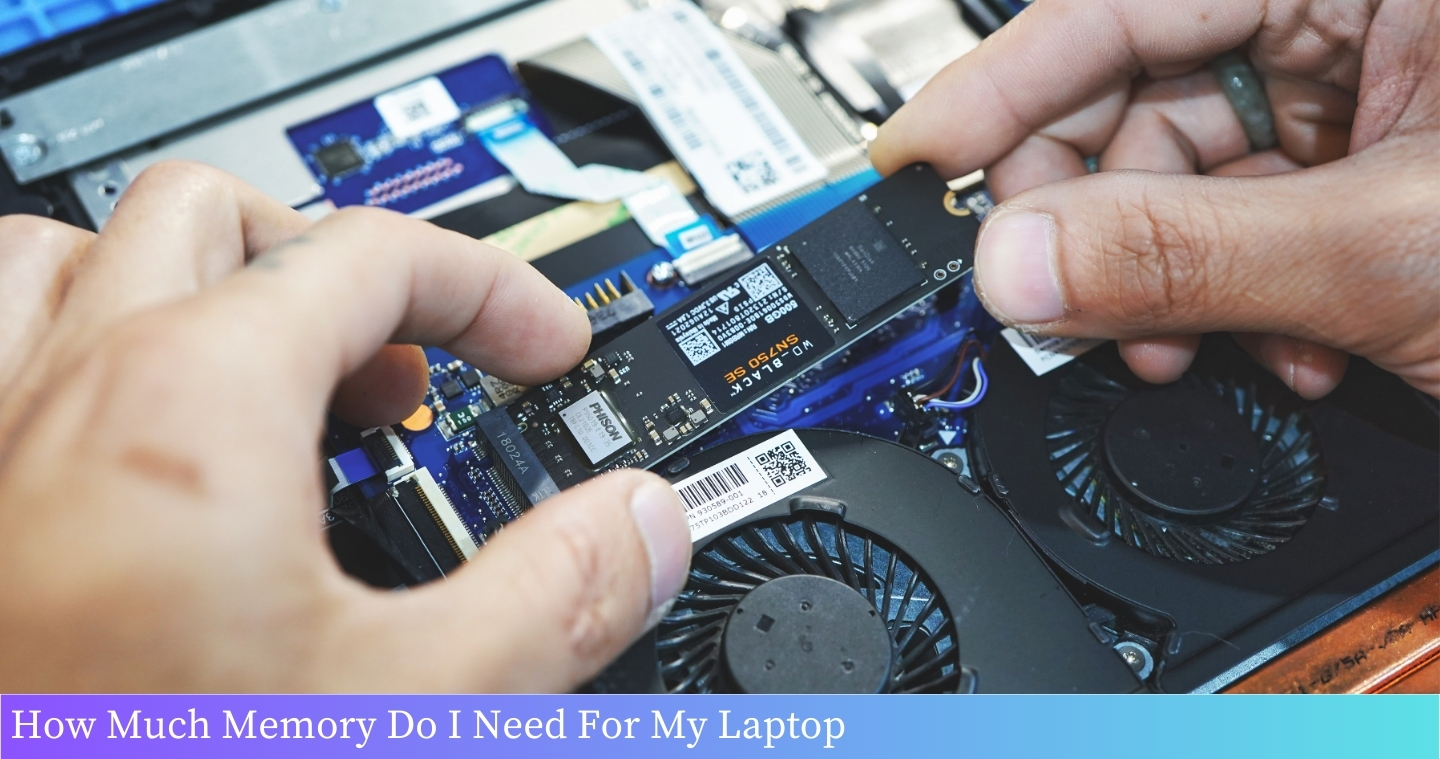You will need at least 8GB of memory for your laptop.
When determining the amount of memory you need for your laptop, consider the tasks you will be performing. For basic tasks like web browsing and word processing, 8GB should be sufficient.
However, if you plan on running resource-intensive applications or multitasking heavily, consider opting for 16GB or more.
Additionally, keep in mind that future software updates and advancements may require more memory, so it’s always a good idea to have some extra headroom.
Table of Contents
I. Determining Your Laptop’s Memory Requirements

Figuring out how much memory your laptop needs can be a bit of a puzzle, but fear not, I’m here to help you unravel it. Determining the right memory size for your laptop is crucial to ensure it runs smoothly and efficiently, without any annoying lag or slowdowns.
Now, let’s get down to brass tacks. When it comes to figuring out your laptop’s memory requirements, there are a few factors you need to consider. Let’s break them down one by one.
1. Operating System
The first thing you need to take into account is the operating system running on your laptop. Different operating systems have different memory requirements.
For example, if you’re using a Windows laptop, you’ll generally need more memory compared to a laptop running on a lightweight Linux distro.
2. Usage
Next up, think about how you use your laptop. Are you a casual user who mainly surfs the web, checks emails, and streams videos? Or are you a power user who juggles multiple applications, runs resource-intensive software, and maybe even dabbles in gaming?
If you fall into the casual user category, you can get away with less memory, say 4GB to 8GB. However, if you’re a power user, you’ll want to aim for a minimum of 8GB, but 16GB or even 32GB would be even better to handle all those demanding tasks.
3. Future-Proofing
Now, let’s talk about future-proofing. It’s always a good idea to consider your future needs when it comes to memory. Are you planning to keep this laptop for a few years? Will you be using more memory-intensive applications down the line?
If you want your laptop to remain snappy and responsive in the long run, it’s wise to invest in more memory upfront. It may cost a bit more now, but it will save you from having to upgrade sooner than you’d like.
4. Budget
Last but not least, let’s not forget about the ol’ budget. Memory prices have come down in recent years, but they can still vary depending on the size and speed you’re looking for.
Take a good look at your budget and see how much you’re willing to spend on memory. Keep in mind that more memory usually means better performance, so it’s worth considering if you can stretch your budget a little.
So, there you have it, folks! These are the key factors to consider when determining your laptop’s memory requirements.
Take your operating system, usage, future needs, and budget into account, and you’ll be well on your way to finding the perfect memory size for your laptop.
II. Factors to Consider When Choosing Laptop Memory

When it comes to upgrading your laptop’s memory, there are a few factors you need to consider to make the right choice. Don’t worry, I’m here to help you dive into the nitty-gritty details without overwhelming you.
1. Memory Type
The first thing you need to know is the type of memory your laptop requires. Most laptops use DDR4 memory, but older models may use DDR3. Make sure to check your laptop’s specifications or consult the manufacturer’s website to determine the correct memory type.
2. Memory Capacity
The next factor to consider is the memory capacity you need. This depends on how you use your laptop. If you primarily use it for basic tasks like web browsing, word processing, and email, 8GB of RAM should suffice.
However, if you’re into gaming, graphic design, or video editing, you’ll want to aim for 16GB or even 32GB for optimal performance.
3. Memory Speed
Memory speed, measured in megahertz (MHz), determines how quickly data can be accessed and transferred. Higher memory speeds can improve overall system performance, especially in tasks that require large amounts of data processing.
However, keep in mind that your laptop’s motherboard must support the chosen memory speed for it to work effectively.
4. Compatibility
Compatibility is crucial when it comes to laptop memory. Not all memory modules are compatible with every laptop model.
You need to ensure that the memory you choose is compatible with your laptop’s motherboard and meets the necessary specifications. Check the manufacturer’s website or consult a professional if you’re unsure.
5. Budget
Lastly, your budget plays a significant role in choosing laptop memory. Memory prices can vary depending on the brand, capacity, and speed.
It’s essential to find a balance between your budget and the performance you require. Research different options and compare prices to make an informed decision.
Now that you’re aware of the key factors to consider when choosing laptop memory, you can confidently make a decision that suits your needs and budget. Remember, it’s always best to do thorough research and consult experts if you have any doubts. Happy upgrading!
III. Recommended Memory Sizes for Different Laptop Uses

Choosing the right memory size for your laptop is crucial for optimal performance. The memory, or RAM (Random Access Memory), directly impacts the speed and efficiency of your laptop’s operations.
Here are some recommended memory sizes based on different laptop uses:
- Basic Web Browsing and Productivity Tasks: For everyday web browsing, checking emails, and basic productivity tasks like word processing and spreadsheets, a minimum of 4GB of RAM should suffice. This size allows for smooth multitasking without any major slowdowns.
- Photo and Video Editing: If you frequently work with photo editing software or engage in video editing tasks, you’ll need more memory to handle the large file sizes and complex operations. Aim for a minimum of 8GB to 16GB of RAM for a seamless editing experience.
- Gaming: Gamers know the importance of having ample memory to support their gaming adventures. To enjoy the latest games with high-resolution graphics and smooth gameplay, it’s recommended to have at least 16GB of RAM. This ensures that the game runs smoothly without any lags or stutters.
- Professional Workloads and Multitasking: Professionals who work with resource-intensive applications like graphic design, 3D modeling, or video rendering require a significant amount of memory. Opt for 32GB or more to handle these demanding tasks and run multiple applications simultaneously without any performance issues.
- Virtualization and Data Analysis: If you work with virtual machines or perform data analysis tasks that involve large datasets, consider investing in 64GB or more of RAM. These memory sizes allow for efficient virtual machine operations and smooth data processing, enhancing your productivity.
Remember, these are general recommendations, and your specific needs may vary. It’s always a good idea to check the system requirements of the software and applications you use regularly to ensure you have sufficient memory to support their operations.
| Laptop Use | Recommended Memory Size |
|---|---|
| Basic Web Browsing and Productivity Tasks | 4GB |
| Photo and Video Editing | 8GB – 16GB |
| Gaming | 16GB |
| Professional Workloads and Multitasking | 32GB or more |
| Virtualization and Data Analysis | 64GB or more |
IV. Upgrading Your Laptop’s Memory

So, you’ve realized that your laptop’s memory is not quite cutting it, huh? Well, fear not, my friend, for I’m here to guide you through the process of upgrading that memory and unleashing the full potential of your trusty laptop.
Now, before we dive into the nitty-gritty details, let’s take a moment to appreciate the benefits of upgrading your laptop’s memory.
By doing so, you’ll experience a significant boost in performance, allowing you to multitask like a champ and run those memory-hungry applications without a hitch.
But how do you go about upgrading your laptop’s memory, you ask? Well, let me break it down for you in a few simple steps:
- Identify your laptop’s memory specifications: To ensure a smooth upgrade process, you need to know what type and how much memory your laptop can handle. Consult your laptop’s manual or visit the manufacturer’s website to find this information. Trust me, you don’t want to end up with incompatible memory modules.
- Decide on the memory size: This is where you get to unleash your inner power user. Consider your specific needs and usage patterns. Are you a casual web surfer or a hardcore gamer? The more memory you have, the better your laptop will handle demanding tasks. Aim for a size that suits your needs and budget.
- Purchase the right memory modules: Armed with the knowledge of your laptop’s memory specifications, it’s time to hit the online stores or local computer shops. Look for reputable brands and ensure that the memory modules you choose are compatible with your laptop’s make and model.
- Prepare your laptop for the upgrade: Before you start tinkering with your laptop’s internals, make sure to back up your important files. Safety first, my friend! Also, remember to power off your laptop and unplug it from any power source before proceeding.
- Install the new memory modules: Now comes the exciting part! Locate the memory slots on your laptop, which are usually found on the underside or beneath the keyboard. Gently insert the memory modules, ensuring they are securely seated. Once done, put everything back together and power up your laptop.
- Verify the upgrade: After the upgrade, it’s essential to check if your laptop recognizes the new memory. Simply head over to your operating system’s settings or use a system information tool to confirm that the upgrade was successful. If all is well, pat yourself on the back for a job well done!
Remember, my friend, upgrading your laptop’s memory is like giving it a shot of adrenaline. It breathes new life into your machine, making it faster and more efficient. So, don’t hesitate to take the plunge and give your laptop the boost it deserves.
Now that you’re armed with the knowledge, go forth and conquer the world of laptop memory upgrades! Good luck, and may your laptop never run out of memory again.
FAQ: How Much Memory Do I Need For My Laptop
1. What is laptop memory?
Laptop memory, also known as RAM (Random Access Memory), is a type of computer memory that stores data that is currently being used by the laptop’s operating system and applications.
2. How much memory does my laptop currently have?
To check the memory of your laptop, you can go to the “System Information” or “About This PC” section in your operating system’s settings. It will display the total amount of installed memory (RAM) on your laptop.
3. How much memory do I need for basic tasks like web browsing and word processing?
For basic tasks like web browsing and word processing, 4GB to 8GB of memory should be sufficient. This amount of memory will allow you to run these applications smoothly without any major performance issues.
4. What if I use memory-intensive applications like video editing or gaming?
If you use memory-intensive applications like video editing software or gaming, it is recommended to have at least 16GB of memory. This will ensure that your laptop can handle the demanding requirements of these applications without slowing down.
5. Can I upgrade the memory on my laptop?
In most cases, it is possible to upgrade the memory on a laptop. However, the upgradability depends on the specific model and manufacturer. You should consult the laptop’s user manual or contact the manufacturer to determine if your laptop’s memory can be upgraded.
6. How do I know what type of memory is compatible with my laptop?
To determine the type of memory that is compatible with your laptop, you can refer to the laptop’s user manual or visit the manufacturer’s website. They will provide information about the specific type, speed, and capacity of memory modules that are compatible with your laptop.
7. Is more memory always better?
Having more memory can improve your laptop’s performance, especially when running multiple applications simultaneously or using memory-intensive software. However, if you only use your laptop for basic tasks, having excessive memory may not provide significant benefits.
8. Can I mix different memory sizes or brands?
While it is generally possible to mix different memory sizes or brands, it is recommended to use memory modules of the same size, speed, and brand for optimal compatibility and performance. Mixing incompatible memory modules may result in stability issues or reduced performance.
9. Can I use external storage devices instead of increasing memory?
External storage devices like USB flash drives or external hard drives can be used to store files and data, but they do not directly increase the memory (RAM) of your laptop. They can help free up space on your laptop’s internal storage, but they won’t improve its performance.
10. Should I consider future memory needs when purchasing a laptop?
If you anticipate using memory-intensive applications or plan to keep your laptop for a longer period, it is advisable to consider future memory needs. Investing in a laptop with more memory or upgradability options can save you from the hassle of upgrading or replacing your laptop in the near future.
Conclusion: How Much Memory Do I Need For My Laptop
So, there you have it, folks! When it comes to deciding how much memory you need for your laptop, it all boils down to your specific needs and usage patterns.
Whether you’re a casual user, a multitasker, or a power user, having enough memory is crucial for a smooth and efficient experience. Remember, more memory means more room for your files, programs, and applications to run seamlessly.
So, take a moment to assess your needs and choose a laptop with the right amount of memory to meet your requirements. Happy computing!






